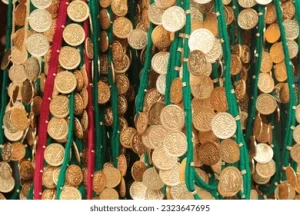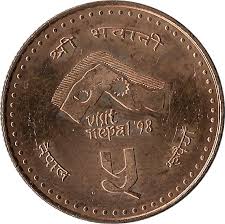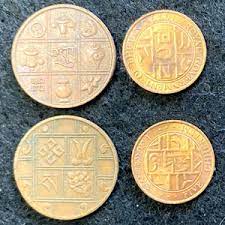What coin is used in Nepal?
The Nepalese Rupee, often known as NPR and represented by the Nepali script sign रू, is the country’s official currency. The Nepal Rastra Bank, the country’s central bank, is in charge of issuing and overseeing the currency. The Nepalese Rupee is broken down into smaller denominations, with coins and banknotes of different values being the most often used forms. Coins are available in lesser denominations, whereas banknotes are available in 1, 5, 10, 20, 50, 100, 500, and 1000 rupees. Please be aware that coin availability and denominations are subject to change, so if you intend to visit Nepal, it’s a good idea to find out the most recent information by consulting local sources.
What is the history of coin in Nepal?
Nepal’s currency has a rich and varied history that spans several centuries. Nepal has a lengthy history of utilizing money, ranging from prehistoric coins to contemporary banknotes. An outline of Nepal’s coinage history is shown below:
Ancient Coins: Like a lot of other South Asian countries, Nepal has a history of utilizing several kinds of old coins. These coins had a variety of patterns and inscriptions and were frequently composed of metals including copper, silver, and gold. Some of the most prominent examples of ancient Nepalese currency are those from the Lichhavi and Malla eras.
Coins of the Shah Dynasty: The Shah Dynasty produced its own coinage after uniting Nepal and founding the current nation in the eighteenth century. These coins, which were composed of copper and silver, bore the portraits of the reigning monarchs.
Coins under the Rana Rule: Nepal utilized a range of coinage, including those produced by British India, throughout the more than a century-long Rana reign. The Rana emperors had strong connections to the British Empire, which had an impact on the money in use in Nepal at the time.
Modern Nepalese Rupee: The modern Nepalese Rupee (NPR) was established as the official currency of Nepal in the mid-20th century. This currency was issued and governed by the central bank of the nation, the Nepal Rastra Bank. Since the introduction of contemporary banknotes and coins, the Nepalese monetary system has undergone continuous change.
Decimalization: Nepal switched from a non-decimal to a decimal currency system in 1974 when it decimalized its currency. To bring the currency into compliance with international norms, this required altering the division and denominational structures.
The official currency of Nepal is still the Nepalese Rupee (NPR), and coins and banknotes are still in use today. Over time, the banknotes and coins have undergone updates and modifications to better represent the nation’s culture, history, and legacy. The nation’s monetary system and currency are managed and regulated by the Nepal Rastra Bank.

Nepalese coins Elements:
Like many other nations, Nepalese coins usually include a variety of designs and symbols that pay homage to the nation’s rich cultural past. Here are some typical aspects you could find on Nepalese coins, while the particular design elements and themes might change throughout time:
Portrait of the Monarch: Traditionally, the image or portrait of the governing king could be found on a great number of Nepalese coins. However, the usage of the monarch’s portrait on coins has stopped since 2008, when Nepal became a federal democratic republic.
National Symbols: National symbols and emblems, such as the flag of the nation, the national emblem of Nepal, or other patriotic images that symbolize the nation, are frequently found on Nepalese coins.
Historical Figures: Certain historical figures or notable individuals who have contributed significantly to Nepal’s history or culture may be depicted on coins.
Religious Symbols: You could come across coins with religious icons and symbols, such as images of Buddhist symbols like the Dharma wheel or Hindu deities, given Nepal’s vast religious variety.
Cultural Heritage: Nepalese coins may include historical locations, famous buildings and artists, or traditional crafts and artwork that are important to the country’s cultural legacy.
Wildlife and Nature: Nepal is renowned for its incredible biodiversity and natural beauty. Some of the coins highlight the fauna, flora, and landscapes of the nation; they include pictures of beautiful mountain vistas and creatures like rhinoceroses, snow leopards, and Bengal tigers.
Inscriptions: Typically, coins include inscriptions that list the amount, the nation’s name in Nepali, which is the official language, and other pertinent details.
Year of Issue: Coins usually have the year of issuance stamped on them to show the mint year.
Denominational Values: The coin’s denomination, which expresses its worth, is frequently seen clearly on it.


Remember that depending on the era and value of the coin, the particular design aspects of Nepalese coins may change. The designs of the nation’s coins, which are approved and issued by the Nepal Rastra Bank, are subject to change throughout time to reflect various themes and cultural facets of Nepal.




